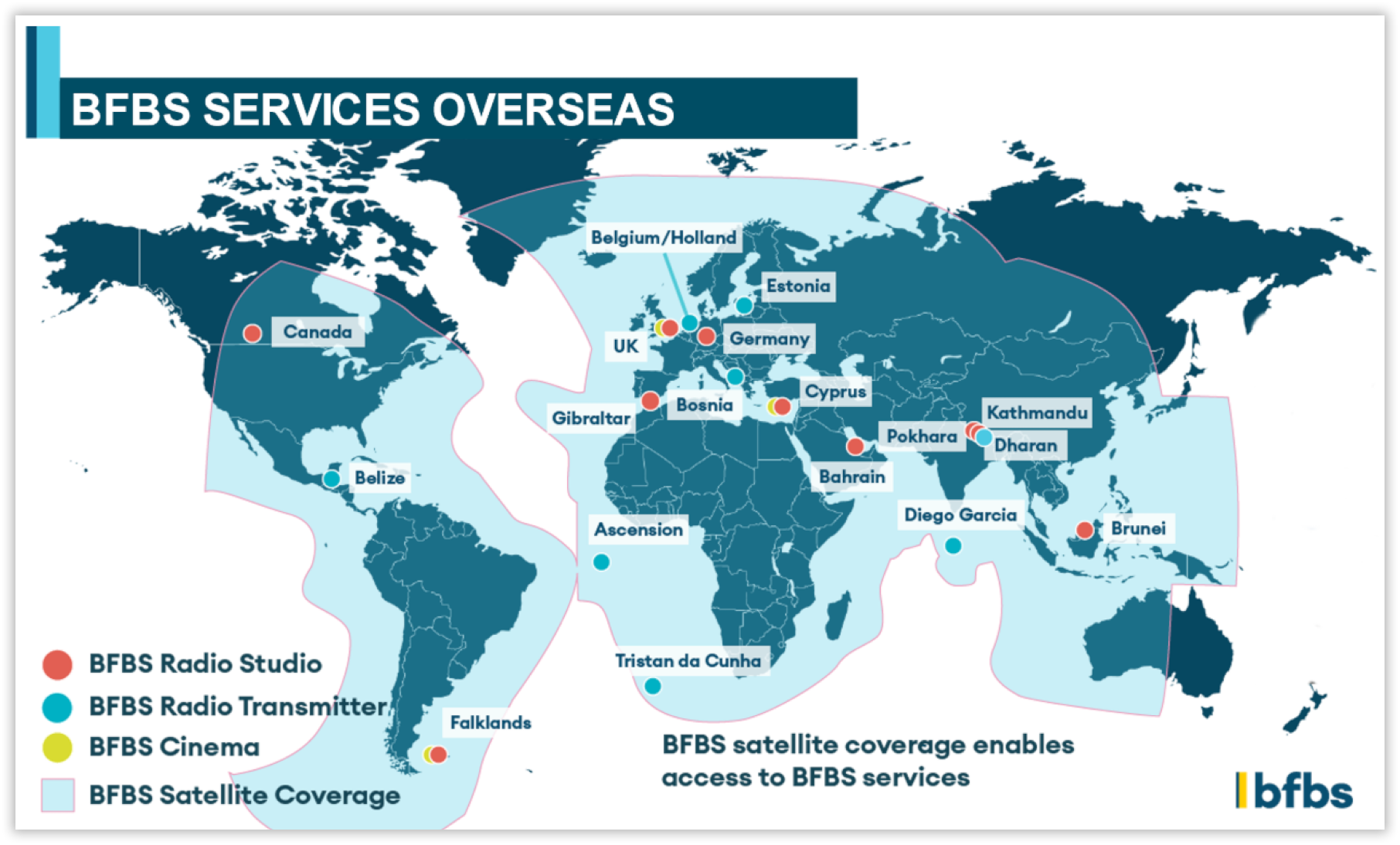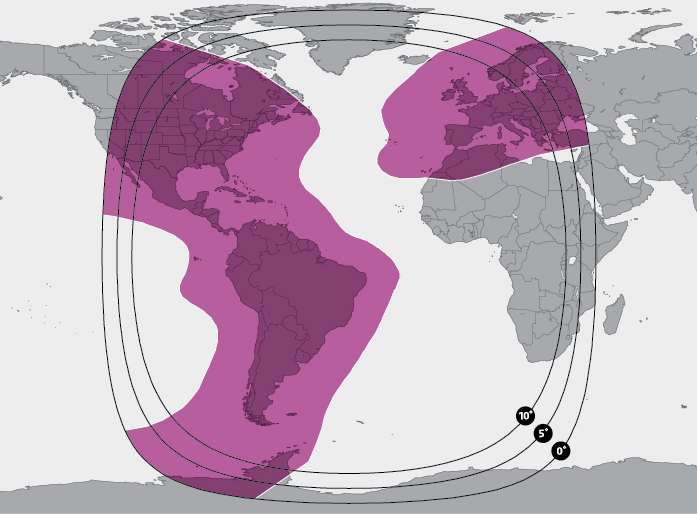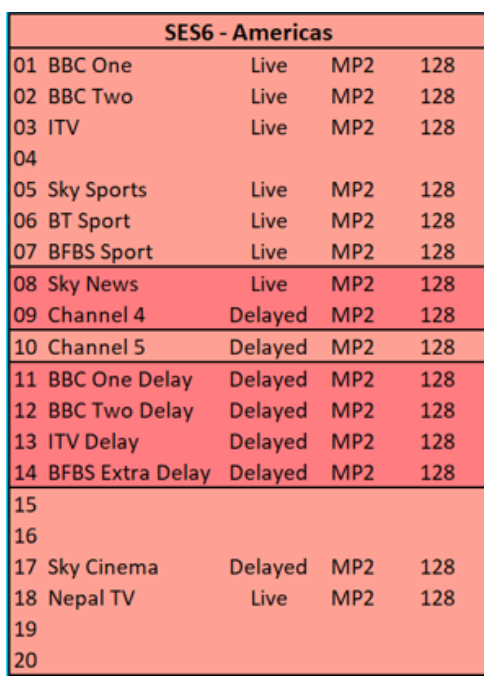This week I had the privilege of spending a brilliant half-day on a personal visit to BFBS’s headquarters in Buckinghamshire. The British Forces Broadcasting Service (BFBS) isn’t just a media organisation; it’s a charity and also a defence contractor dedicated to supporting the well-being of the UK armed forces community.
The history of BFBS
The Army Kinematograph Service (AKS) was established in August 1941 by the British government to provide training, educational, and recreational films for the Army during the Second World War. During WWII, the AKS had a broad remit: mobile cinema units, training film production, and exhibitions for troops both in the UK and abroad.
Separately, the British Forces Broadcasting Service (BFBS) was founded in 1943, during World War II, with a clear mission: to keep British troops overseas entertained and informed. Its first broadcasts were transmitted from the Middle East, soon spreading across India, North Africa, and mainland Europe. After the war, as Britain maintained garrisons around the world, BFBS followed them, setting up permanent stations in places like Germany, Cyprus, Gibraltar, and Hong Kong. For service personnel far from home, BFBS became a cultural lifeline, delivering BBC programmes, live music, and sports coverage that connected them back to the UK.
In 1946, the AKS was reorganised and became the Army Kinema Corporation (AKC). The “Kinema” spelling was retained to differentiate from the Army.
During the Cold War, BFBS Radio became immensely popular in West Germany—not only among service members but also with local civilians captivated by English-language pop and rock shows. As new conflicts emerged in the 1990s and 2000s, from the Balkans to Iraq and Afghanistan, BFBS adapted once again, deploying mobile broadcasting units and field studios to deliver radio and television directly into active war zones.
BFBS is headquartered at Chalfont Grove, home to Chalfont House, situated on 45 acres of land near the M25. The site, recorded in the Domesday Book as Celfunte, was purchased in 1954 by the organisation that would later become the Services Sound and Vision Corporation (SSVC), and it has served as the headquarters for military broadcasting and cinema operations ever since.
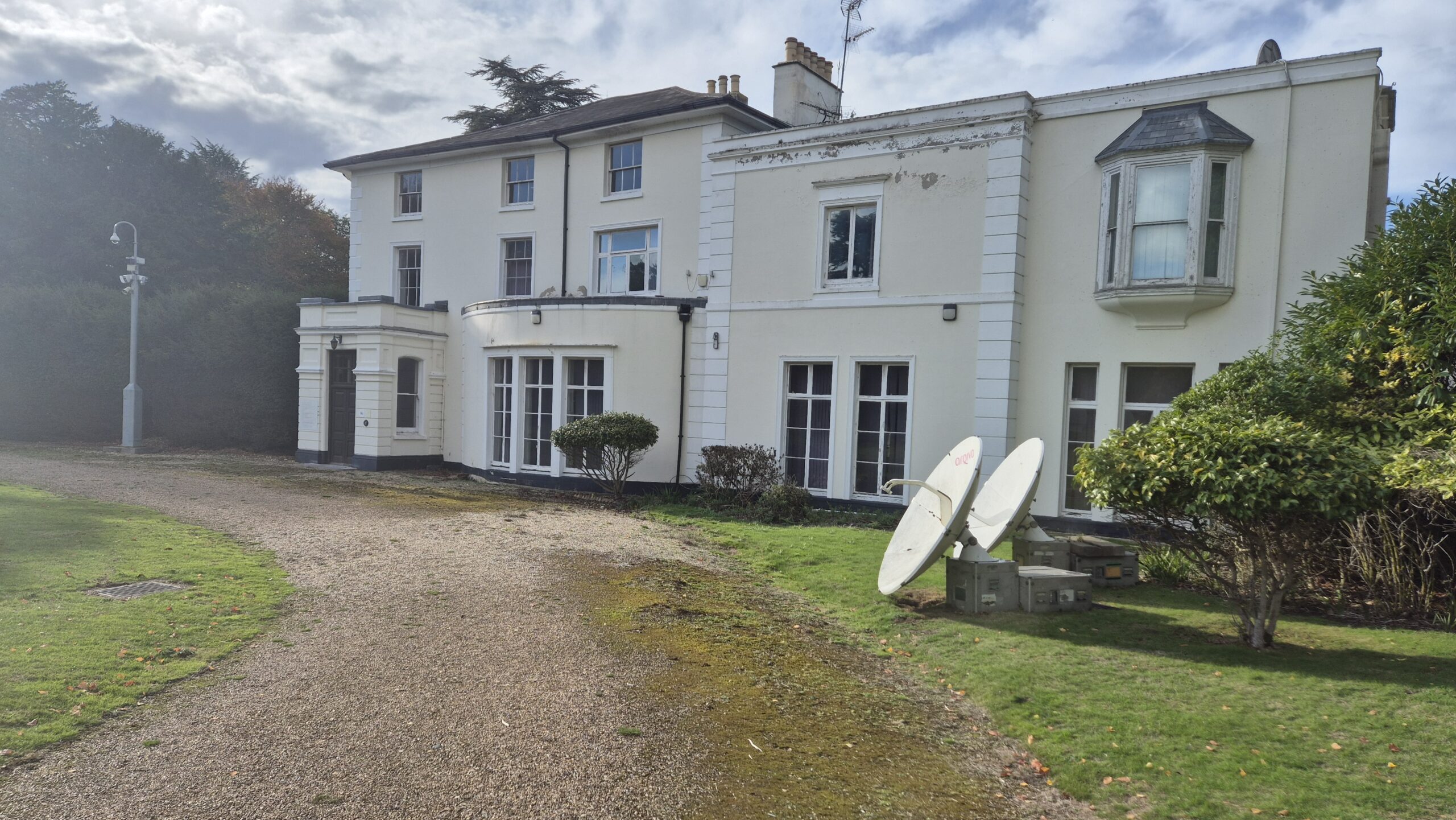
The site is shared with Arqiva, which provides critical data, network, and communications services worldwide.
BFBS TV was launched on 18 September 1975 in Celle, West Germany, giving troops access to British television shows that would have been impossible to watch abroad. At the time, the microwave link between Celle and central London was reputedly the longest in the world.
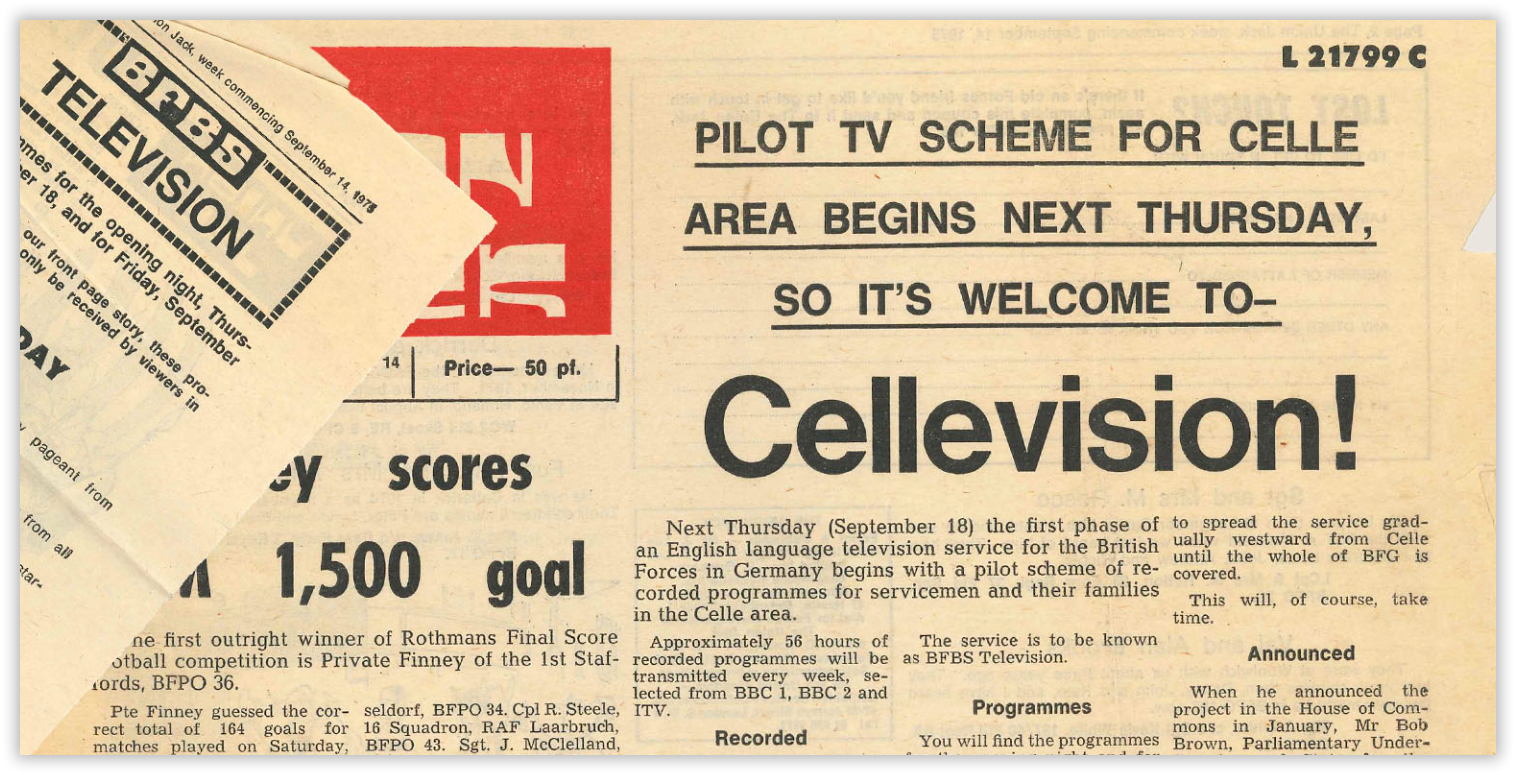
In 1982, the Army Kinema Corporation and BFBS were brought together under one charitable umbrella as the Services Sound and Vision Corporation (SSVC). SSVC became the parent organisation for BFBS and a range of other welfare and entertainment services supporting the UK armed forces community.
In July 2020, SSVC underwent a significant transformation, renaming all areas of itself as BFBS. This rebrand unified its activities from broadcasting and digital media to welfare communications under a single, modern identity.
In 2025, BFBS celebrated the 50th anniversary of its TV service, marking the occasion in September at the Royal Television Society (RTS) Convention in Cambridge.
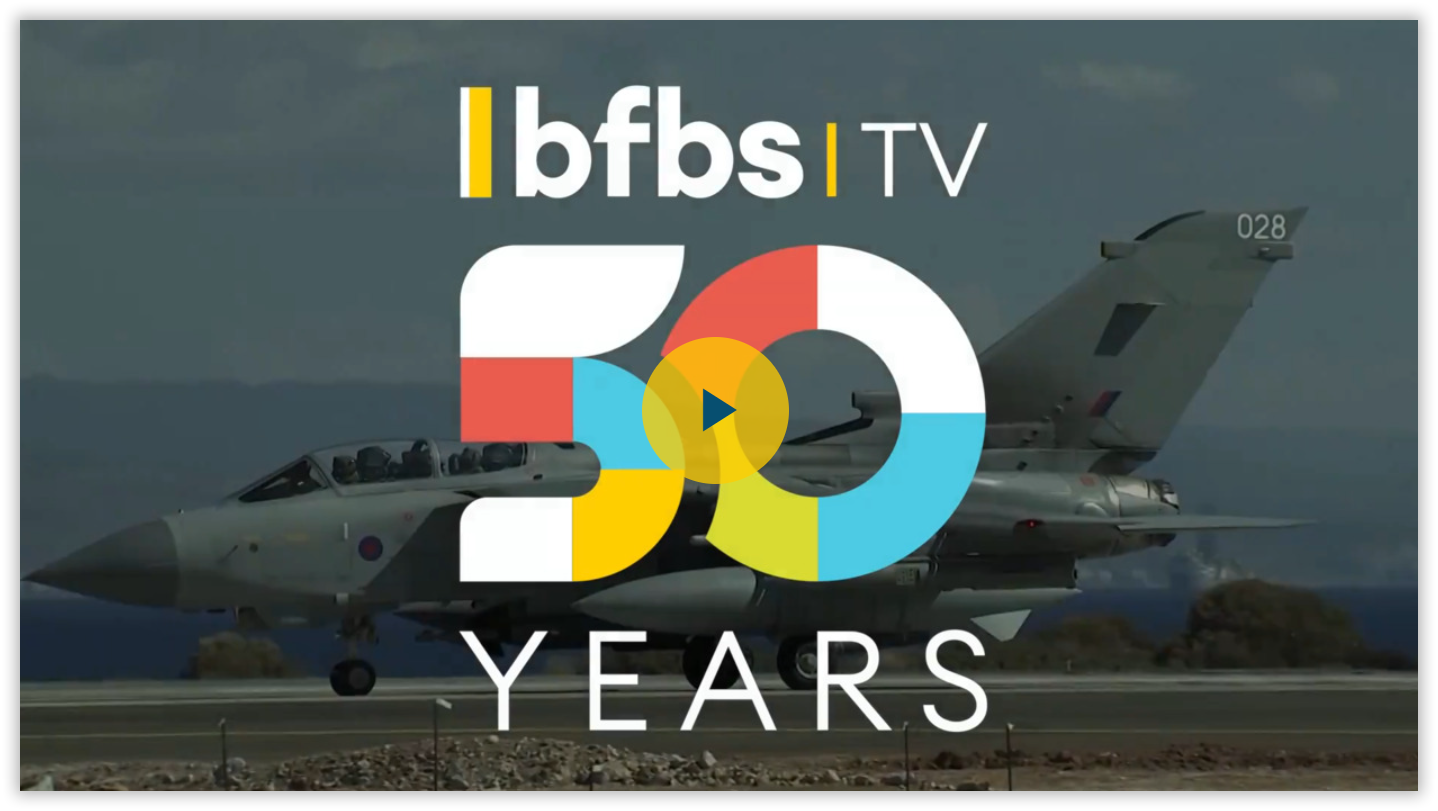

BFBS today
Alongside broadcasting, BFBS operates cinemas on military bases, produces bespoke TV and radio programming, manages technical broadcast infrastructure, and supports broader welfare communication initiatives across the forces worldwide.
BFBS operates as a global media network serving the UK Armed Forces and their families across more than 20 countries, including Cyprus, Gibraltar, Brunei, the Falkland Islands, Canada, Kenya, and operational bases throughout the Middle East.
A further element of BFBS’s services is the management of traditional cinemas operated in conjunction with the military for armed forces communities.
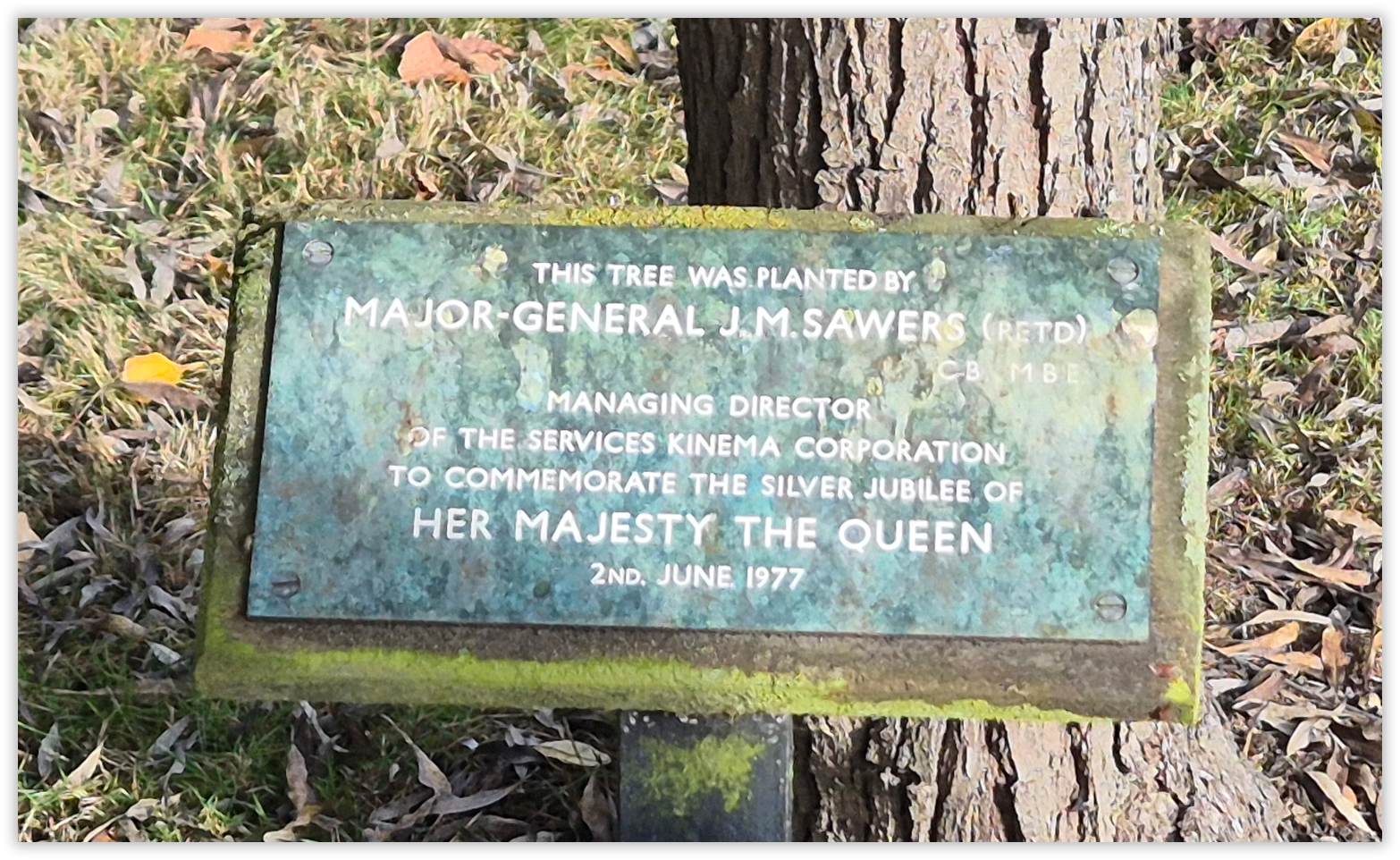
Its 24-hour radio service features presenters who blend music, chat, and news with forces-specific content such as welfare messages and community updates. Listeners can tune in via FM, satellite, DAB+ in the UK, or via the BFBS Radio app online.
For those based overseas, BFBS TV delivers a curated selection of 12 standard-definition (SD) UK channels, including BBC, ITV, Channel 4, Channel 5, and Sky programmes, broadcast via satellite and time-shifted to match local time zones, so troops abroad don’t miss major live events.
Digitally, BFBS reaches audiences through its social media channels, the BFBS Radio app, the BFBS website, the Forces News website, and a YouTube channel, which features defence updates, veterans’ stories, and family-focused content. The network also produces original podcasts and special series exploring military life.
BFBS MiPlayer is a platform for delivering media in an OTT style over IP networks, but it does not require internet access. Audiences in the Falkland Islands will be very familiar with it. BFBS created it and continues to develop it, and in January, it will celebrate its tenth anniversary since the first installation on a Royal Navy ship.
The BFBS MiPlayer Edge platform, launched in May 2023, extends the MiPlayer concept to leverage LEO satellites and other terrestrial networks, such as 5G, to deliver the same experience with additional features.

Beyond broadcasting, BFBS plays a vital role in community support, airing personal messages and “shout-outs” from families to deployed personnel, providing media-training programmes for service leavers.
BFBS TV and radio services are also available on all Royal Navy and Royal Fleet Auxiliary vessels worldwide, ensuring crews remain connected wherever they are at sea.
In the UK, BFBS is classified by Ofcom as a closed user group, meaning its services fall outside Ofcom’s direct regulatory remit.
Whether the twelve SD channels transition to high definition will depend on future moves toward internet-based delivery and the Ministry of Defence’s investment priorities in upcoming contracts.
 BFBS and LEOs
BFBS and LEOs
BFBS extensively uses existing LEO satellite services to improve the delivery of its channels worldwide.
BFBS and OneWeb
BFBS has partnered with LEO satellite operator OneWeb to enhance how UK armed forces access entertainment and welfare content.

The partnership, announced in 2023, marked “a significant step in modernising how welfare services reach deployed personnel. OneWeb’s LEO network provides stronger, more reliable coverage with lower latency, while MiPlayer Edge ensures secure, bandwidth-efficient delivery of entertainment and information.”
BFBS’s media content is not available on Sure SA’s OneWeb service.
BFBS and Starlink
BFBS has also extensively explored using Starlink. While no formal partnership has been announced, a 2025 update referenced demonstrations of “hybrid LEO solutions via Starlink,” signalling interest in how Starlink’s global high-speed, low-latency connectivity could support media and welfare services in remote or mobile environments.
In August 2025, BFBS stated:
“In the UK, our development and strategy team was recently invited to Azimghur Barracks in Colerne, home of 21 Signals and Electronic Warfare Regiment, to show MOD stakeholders the capabilities available as part of Skynet 6. They demonstrated our traditional MiPlayer and hybrid LEO (Low Earth Orbit via Starlink) options. BFBS was also represented by our colleagues at Eutelsat OneWeb on their demo truck.”

The Charity Behind the Broadcasts
BFBS is a registered charity No. 242451. Behind the radio and TV broadcasts lies a powerful charitable mission: to entertain, inform, connect, and champion the armed forces community wherever they are.
Welfare Fund
The BFBS Welfare Fund provides grants for welfare and recreational projects that fall outside the scope of normal public funding. From kits for deployed units to family spaces on bases, these grants directly improve morale and quality of life for serving personnel and their families.
The Big Salute
The Big Salute is BFBS’s flagship fundraising campaign. Every penny raised goes to armed forces charities that support serving personnel, families, and veterans — funding projects such as respite breaks, wellbeing programmes, and veteran retraining schemes.
Community Connection
Through storytelling, live events, and media campaigns, BFBS raises awareness of military life and the challenges faced by service families, strengthening the connection between the armed forces and the wider public.
BFBS Academy
The BFBS Academy provides professional training in radio, television, and digital media production for service personnel. It equips participants with practical broadcasting and communication skills and supports career transitions, helping them move into civilian media or related industries after leaving the military.
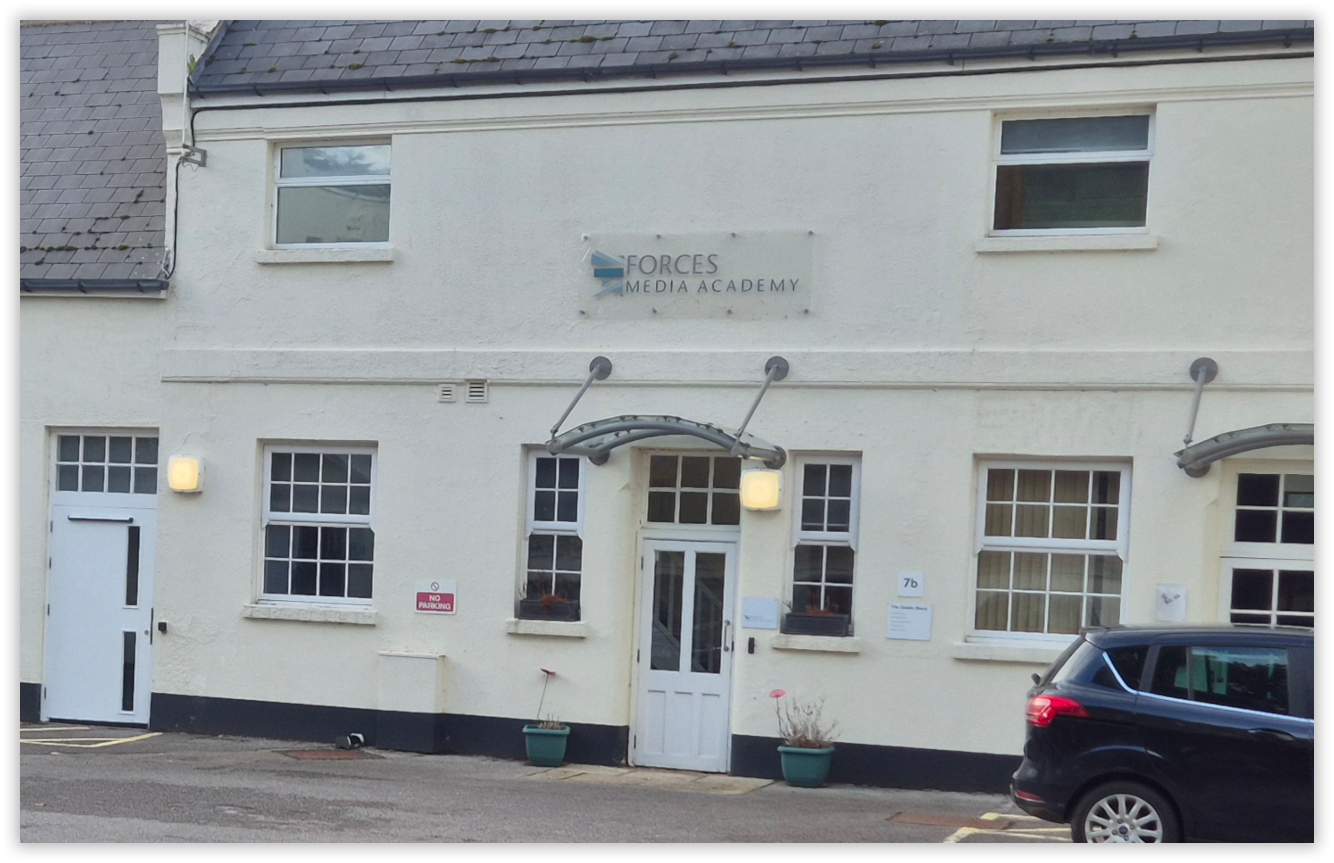

BFBS in the Falklands
One of the most distinctive chapters in the history of the BFBS is its enduring presence in the Falkland Islands.
Before 1982
Before the Falklands War, entertainment options on the islands were limited. Islanders relied on rented videotapes of feature films for television viewing, often switching between NTSC and imported PAL formats. British garrisons at Port Stanley, Moody Brook, and Government House received weekly VHS tapes from the Services Sound and Vision Corporation (SSVC) – BFBS’s previous charity name, containing recorded BBC and ITV programmes.
War and the Role of Broadcasting
When Argentine forces invaded on 2 April 1982, they began transmitting both Spanish and English-language broadcasts, reportedly using videotapes seized from Government House, as part of a propaganda effort.
During the Falklands War, SSVC redirected its regular tape shipments to the Royal Navy Task Force. These circulated among ships such as HMS Hermes, HMS Invincible, and HMS Fearless, providing crews with a vital connection to home during the conflict.
Post-War Reconstruction and the Birth of BFBS Falklands
After the British re-occupation, BFBS (then SSVC) resumed regular tape deliveries to garrisons and naval units. In October 1983, construction began on a new airbase at Mount Pleasant to establish a permanent British military presence.
RAF Mount Pleasant Airfield (MPA) officially opened in May 1985, with British forces settling there permanently by late 1986. To serve them, BFBS introduced PAL colour television to the Falklands, even though many civilians still owned older NTSC sets from before the war.
The first BFBS television broadcasts began on 4 December 1986, initially covering the area around Mount Pleasant but also accessible to nearby civilians with PAL-compatible televisions.
In 1988, a privately built (by local citizens?) repeater on Sapper Hill relayed the signal to Port Stanley. The BFBS VSAT terminal was based at Mount Pleasant Complex (MPC), sending content via a microwave link to the BFBS headend, which was located at the Cable & Wireless earth station.
However, after it was found that not all of the BFBS content had the necessary rights for distribution to the civilian population, the service had to be briefly suspended. A temporary timer system was introduced to block unlicensed content automatically until BFBS secured official rights from distributors for the islanders. Once resolved, authorised broadcasts resumed for both Mount Pleasant and Stanley. Islanders elsewhere often shared recorded tapes informally, extending British television’s reach across the archipelago.
BFBS Falklands Today
From its base at MPC, BFBS Falkland Islands Radio now provides a 24-hour mix of music, news, and local updates. It plays a key welfare role, broadcasting messages and “shout-outs” from families in the UK, a vital morale link for personnel serving thousands of miles from home.
The image below left shows coverage of the SES6 geosynchronous satellite, which provides BFBS with its Falkland Islands TV service via a VSAT download link at the Mount Pleasant Complex. The image below right shows channels with 3 to 4 hours of delay to give audiences in the Falkland Islands a TV experience very similar to that in the UK, in terms of program times. Civilian audiences in the Falkland Islands are only entitled to receive the TV channels highlighted in a darker colour.
The global BFBS TV platform is available to all entitled members of the U.K. Armed Forces community overseas, including those on the Falkland Islands. Additionally, and unique to the Falklands, a small subset of channels are on-passed to the civilian population, managed in accordance with the content permissions held by BFBS with U.K. public service broadcasting (e.g BBC, ITV) and rights holders (e.g Sky News), the islands’ only multi-channel service (Since KTV closed earlier this year), delivering a range of UK channels. Additionally, Falkland Islands Television (FITV), which BFBS broadcasts via MiPlayer, is the sole local television station and provides community-based content, including news and cultural programming.
The picture below shows the Sure SA tower on Sapper Hill that supports the BFBS UHF broadcast antenna covering Stanley (the tower is the one to the left of Sure SA’s red/white-painted tower).
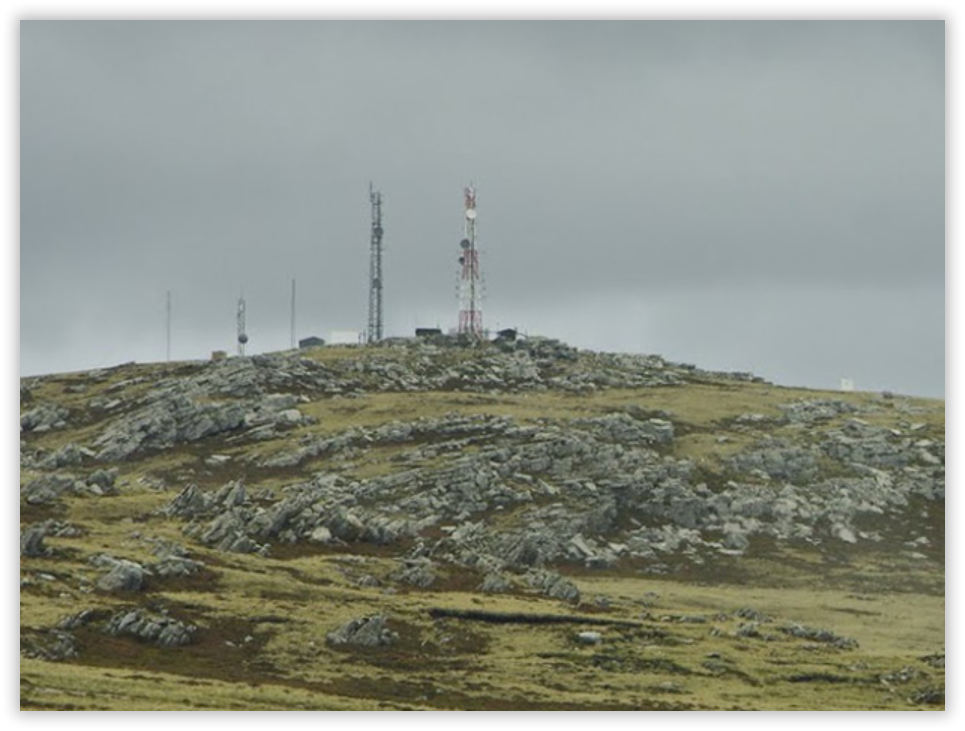
The BFBS MiPlayer platform, with its catch-up capabilities, is also available to island residents. Financially supported by the Falkland Islands Government (FIG), it is distributed across Sure SA’s legacy ADSL network island-wide.
Stanley Harbour Lights Cinema
BFBS Cinemas has supported the cinema’s operations since its inception.

Possible concerns about the future
During my visit to BFBS, I had the opportunity to discuss the organisation’s future in the Falklands. While much of the conversation was confidential, it painted a clear picture of some issues concerning broadcast media companies worldwide as they shift from traditional geosynchronous satellite delivery to internet-based platforms. Three key trends stood out as particularly important for the islands and BFBS’s operations there.
BFBS Service Delivery Over LEO Satellites
Currently, delivery of BFBS services via LEO satellites is not available in the Falklands. This is not a technical limitation; the technology works. The primary constraints are regulatory, contractual, and commercial. Existing agreements between BFBS, the Falkland Islands Government (FIG), and Sure SA mean that transitioning to a LEO-based system would require significant renegotiation and investment.
Until the islands’ broader telecoms strategy clarifies how LEOs fit into the new world of telecommunications beyond the expiry of SureSA’s exclusive licence, I would have thought BFBS is unlikely to commit to significant infrastructure change.
However, given its experience and long history of involvement in Falkland Islands’ matters, BFBS will likely remain a key provider of broadcast content in the Falklands for many years to come.
Watching UK TV Legitimately in the Falklands
The only legitimate way to watch British Public Service TV in the Falklands is via a specially curated subset of the main BFBS TV closed user group: via SD UHF broadcasts from Sapper Hill, DTH satellite dishes in Camp, or streaming through MiPlayer over the Sure SA Stanley VDSL network.
The growing use of Starlink raises the risk that some residents will turn to unlicensed methods to access copyrighted broadcasts, such as “cracked” or jailbroken Fire TV Sticks. This is illegal in the UK and most countries worldwide. While Falkland Islands telecommunications regulations are somewhat outdated and lax in new-technology areas, accessing or distributing copyrighted content without permission is morally, if not legally, prohibited in the Falklands. I would expect BFBS to be highly vigilant about this issue, as it directly affects the legal distribution and rights protection of its content providers. Some will block even UK IP addresses if they are from known VPN ranges.

VPN Usage
VPNs are commonly used in the Falkland Islands to access UK and international online content, given the territory’s geographical isolation and limited local media options. However, the use of VPNs from outside the UK raises concerns for UK broadcasters, as it enables viewers to circumvent geo-restrictions (for example, the BBC licence fee) and access content not licensed for distribution in their region.
While it is unclear how effectively these restrictions are enforced in practice—since blocking seems unpredictable—UK streaming platforms such as BBC iPlayer, ITVX, Channel 4’s All 4, My5, and Sky Go/NOW officially limit access to users with UK-based IP addresses. This policy helps them comply with copyright and content licensing agreements that restrict their programming to a UK audience.

Conclusion
BFBS has a remarkable history, from its origins during World War II to its modern role connecting service personnel, their families, and local communities such as those in the Falklands. Over more than eighty years, it has continually adapted, delivering VHS tapes during the Falklands War, establishing permanent TV and radio services, and now embracing digital platforms and LEO satellite networks to reach personnel in the most remote corners of the globe.
What stands out is BFBS’s dual mission: not just broadcasting, but actively supporting the welfare and well-being of the UK armed forces community. Through radio, television, digital platforms, and cinema management, BFBS keeps troops connected to home, entertains and informs, and provides vital communication channels in challenging and isolated environments.
In the Falklands, BFBS remains a cultural lifeline, offering legitimate access to UK television and radio while boosting morale and strengthening community engagement. At the same time, the rise of new technologies such as Starlink and VPNs, as well as streaming services, underscores the ongoing importance of legal compliance and rights protection, as broadcasters and regulators work to balance accessibility with content providers’ rights.
Above all, BFBS demonstrates how a media organisation can evolve into a comprehensive support system for military personnel worldwide, combining entertainment, information, and welfare in a single, enduring mission.
Credit: I would like to thank Nick Beer, Director, Development & Strategy, and Adam Hardwick, Deputy Director, TV & Cinemas, of BFBS, for hosting me.

